
“Reflections” depicts a mother and her baby proboscis monkey (Nasalis larvatus) leaping from one bank of a river to the other from a tall tree canopy. The painting is part of the “Flying Primates” series, which was exhibited at the Three Monkeys conference. The artist intentionally omitted the tree background, keeping only the image of the primate suspended in mid-air, its reflection reflected in the water.
Coming to the Ho Chi Minh City Fine Arts Association this week (from now until July 19), the public will enjoy more than 160 fascinating wild art paintings by artist Dao Van Hoang through the exhibition Wild Art - Nature through the eyes of an artist.
In addition to the painting exhibition, the event also has workshops on art and animal conservation, attracting the most audiences, especially young people and families bringing their children to learn and explore .
See wildlife from a bird's eye view
Dao Van Hoang's paintings look realistic at first glance, but they are not like scientific illustrations. He is telling a vivid story about the wild world through paintings. There, even the most timid and rare animals like the Saola can appear leisurely and at ease.
Using acrylic on canvas or watercolor on paper, the artist depicts the animal world from an eye-level perspective, as if from a butterfly in flight or from some animal accompanying the subject, not from a human perspective.
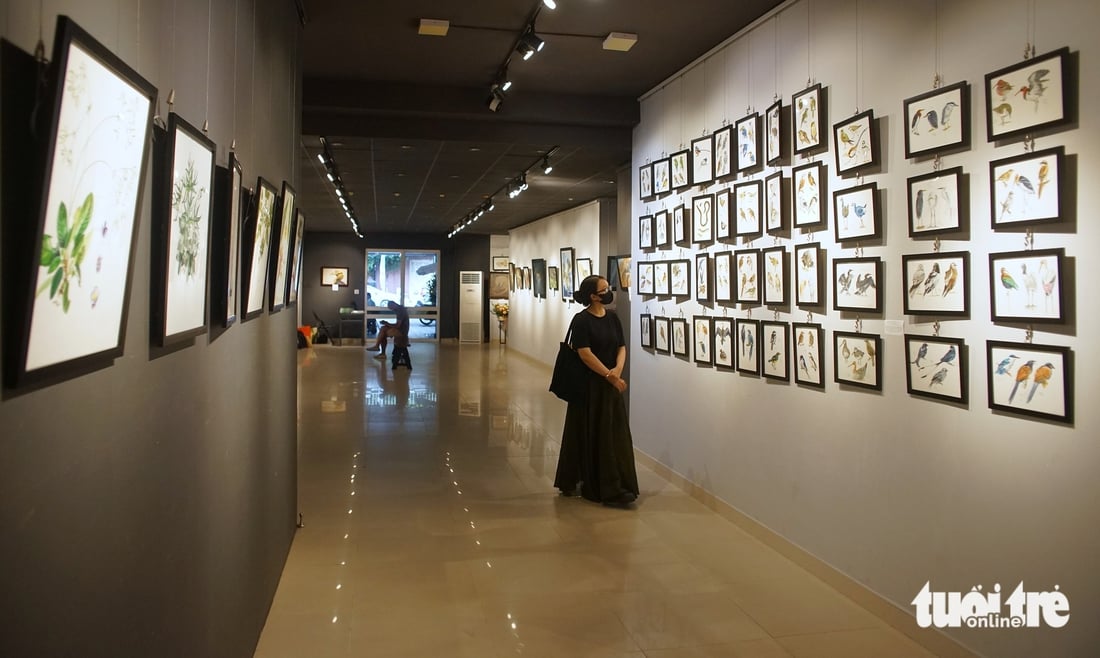
The exhibition attracts viewers to enter the natural world, feel the beauty and emotional stories about the lives of wild animals - Photo: H.VY
Dao Van Hoang often likes to "hide" animals in the depths of the background, forcing viewers to search for them as if they were exploring the forest.
Following each line, viewers will be more interested in discovering more meticulous details: the hiddenness of the subject, the rhythm in the painting, the subtle handling of transitional light sources in the natural environment... For him, it is a way of telling a story through each layer of color.
But what makes Dao Van Hoang's paintings most attractive is the harmonious combination of scientific accuracy and artistic richness.
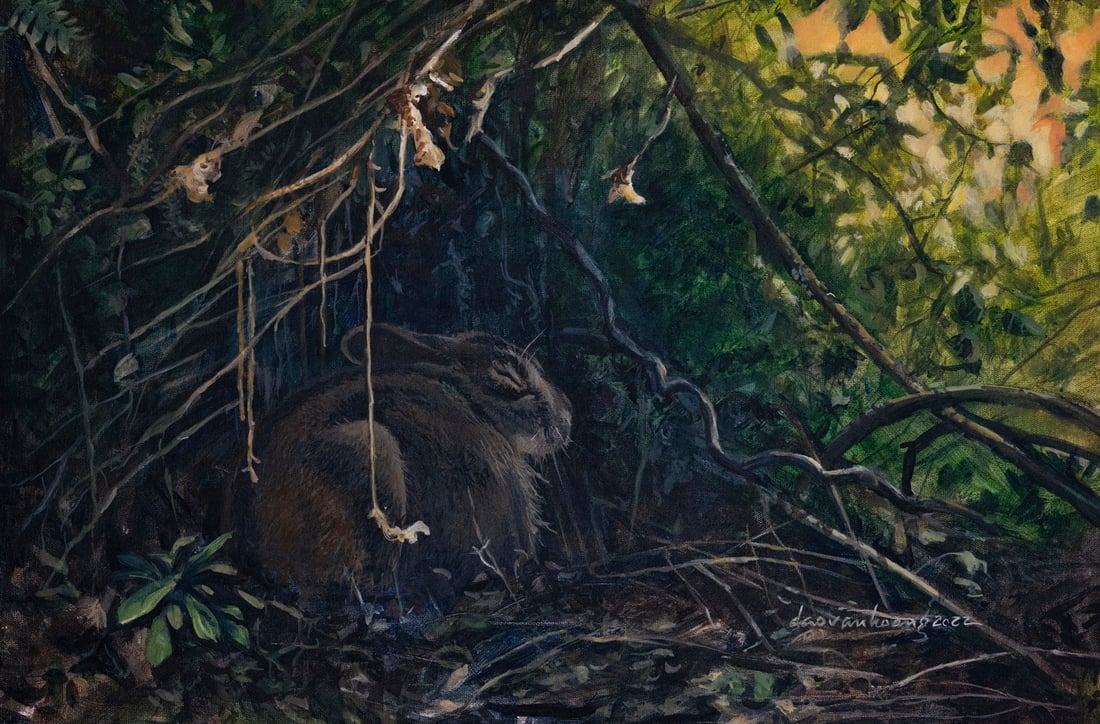
“Waiting for Nightfall” depicts the Striped Rabbit (Nesolagus timminsi), named after the scientist Rob Timmins. Drawing this species is a challenge because it lives like a shadow in the dark depths of the forest. The artist envisioned the rabbit waiting, motionless and invisible, in the last light before nightfall.
As a self-taught artist, he spent a lot of time studying books on anatomy, perspective, and scientific illustration.
At the same time, he often goes deep into the forest, collaborates with conservation areas, and accompanies scientists... to directly experience and study the behavior, habits, and specific habitats of each species.
Self-taught knowledge and enthusiastic support from experts are the foundation for Dao Van Hoang to create paintings of wildlife that are both soulful and accurate.
When drawing, Dang Van Hoang is always drawn to the outer skin of species: fur, scales, feathers, then the layers of moving muscles under the fur, the vivid textures that have changed over millions of years of evolution. Those are also the details that make him "feel happy" the most.
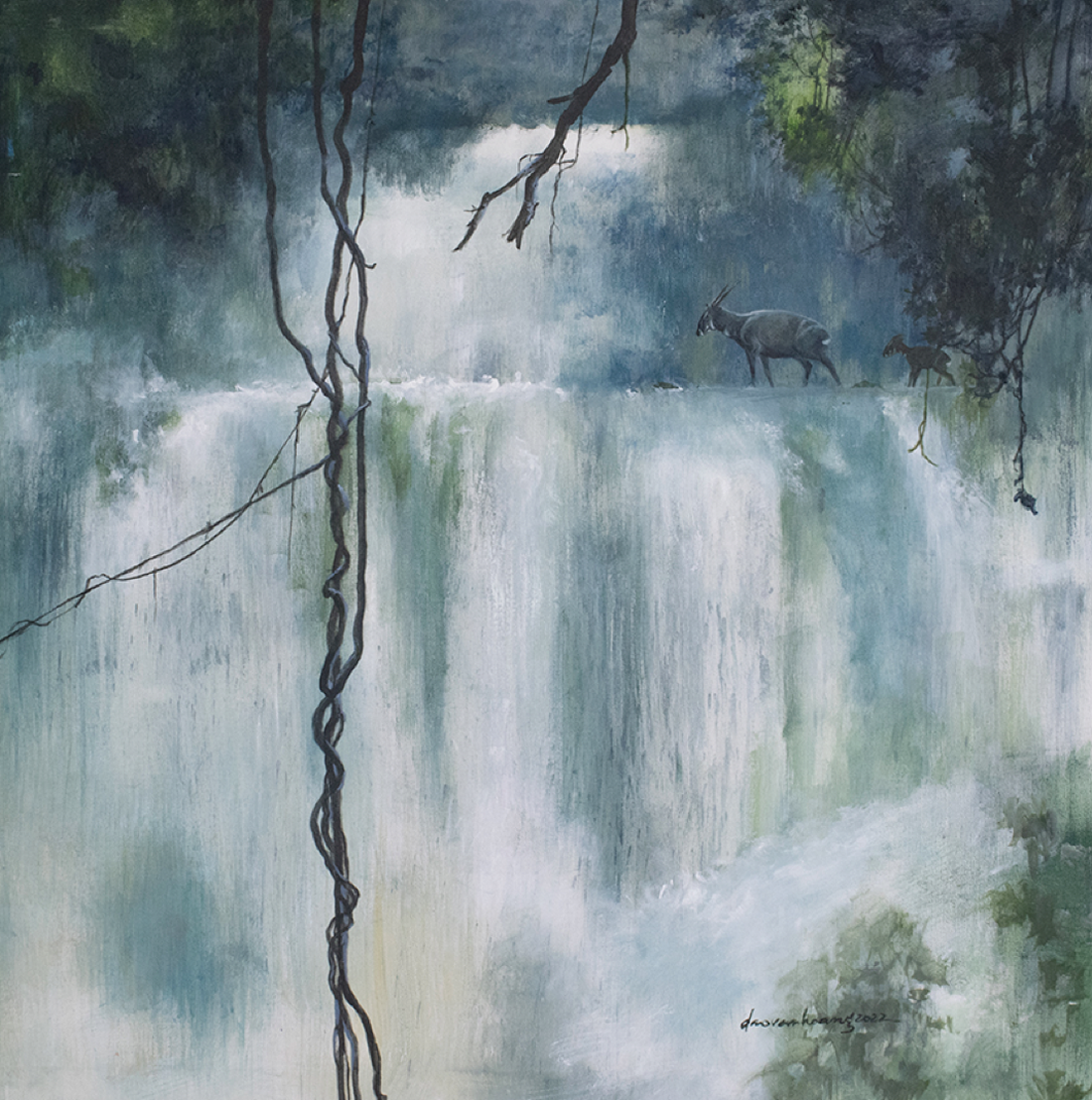
The painting "Ghost" depicts a mother and baby Saola (Pseudoryx nghetinhensis) on a waterfall. He especially likes the clumsy appearance of the baby when recreating this legendary animal in the wild.
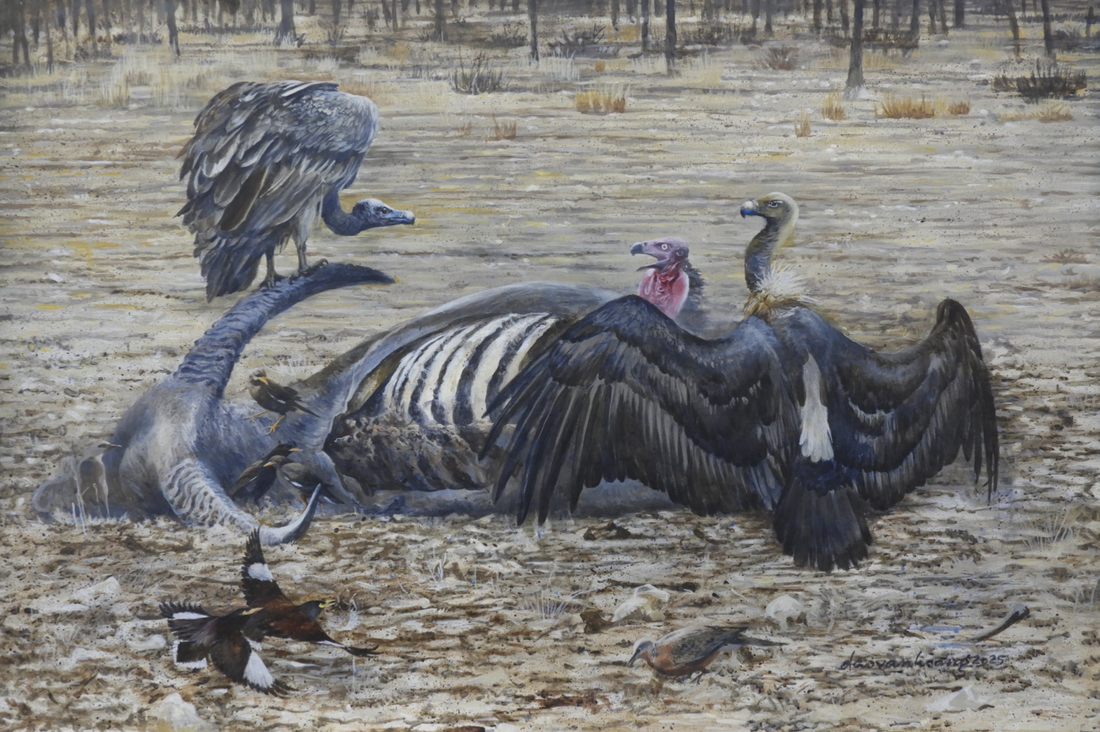
“Gathering” depicts three different species of vultures in Siem Pang Nature Reserve in Cambodia. The artist watched them for hours from an observation tower, circling, landing, and walking with style, but none of them touched the buffalo carcass below. According to Jonathan Eames, they were young and probably just gathering to show off. The artist recreated the scene with the vultures, starlings, and doves as guests at a party.
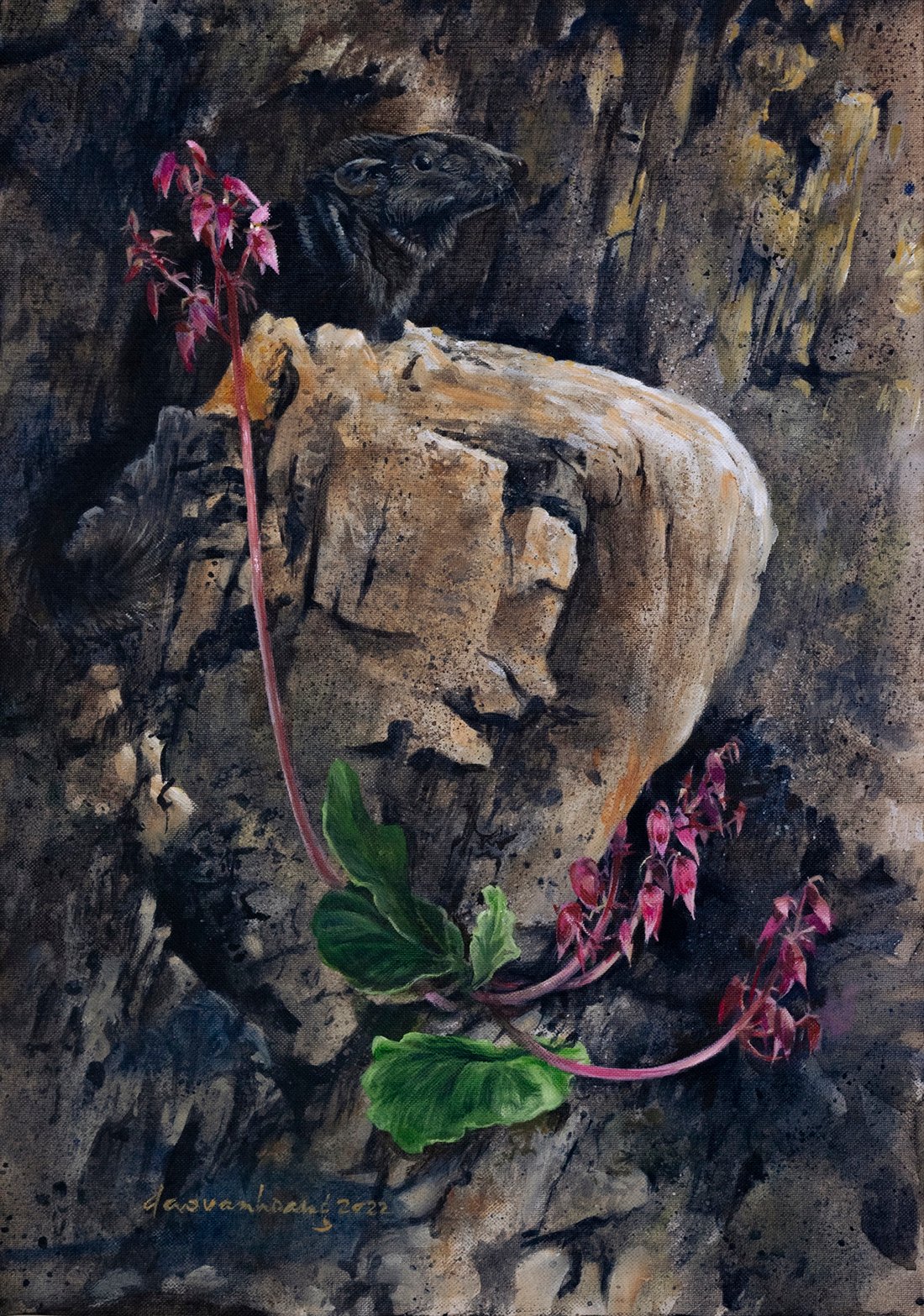
The painting "Afternoon" depicts the Laotian Mountain Rat (Laonastes aenigmamus). The artist carefully studied the habitat of this rat with Rob Timmins. When he wanted to emphasize the foreground, he connected with a plant expert to find a suitable Begonia species. Finally, he studied the exact proportions between them in perspective.
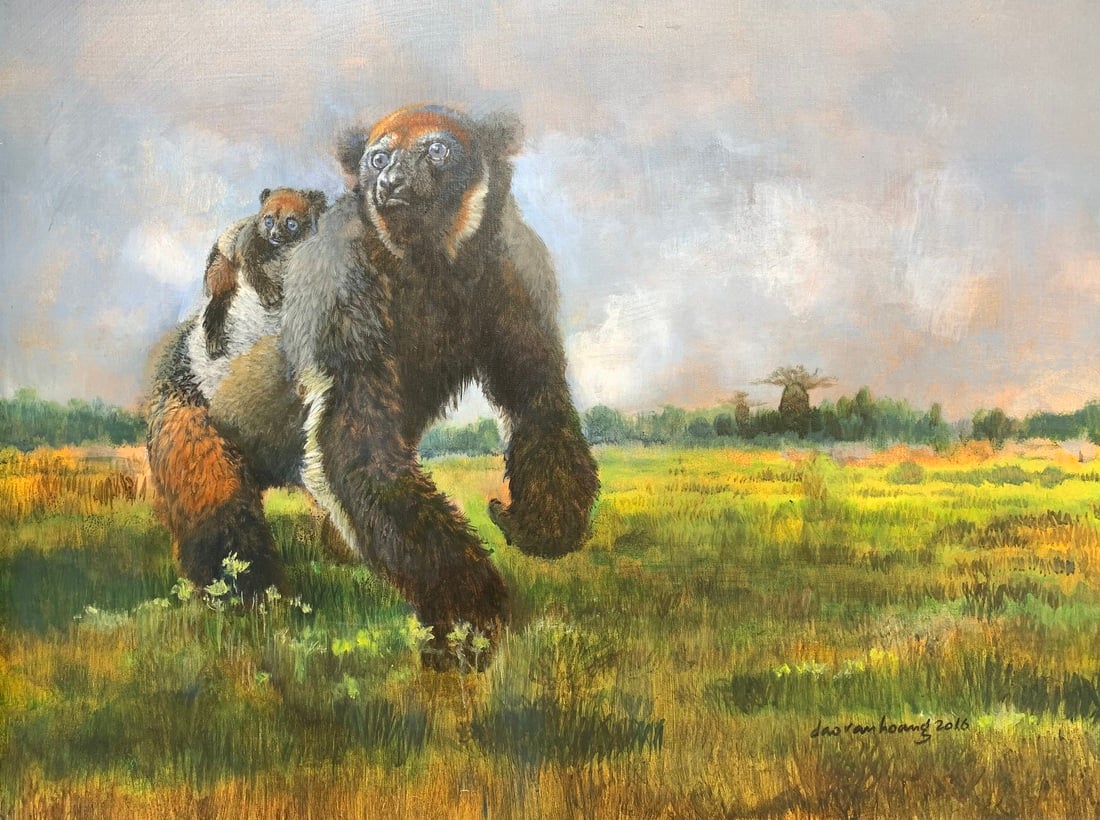
“Ancient” depicts the extinct giant lemur (Archaeoindris). Scientists have only found a skull and a few bones. The artist imagined what the animal looked like, its fur blending in with its surroundings, its movement at the size of a gorilla, and its young clinging to its mother’s back.
When we love something, we want to keep it.
Having been involved in wildlife conservation for nearly 30 years, Wild Art - Nature Through the Eyes of an Artist is Dao Van Hoang's first solo exhibition.
Previously, his paintings usually only appeared at international scientific and conservation conferences.
The painting "Uprooted" is also one of the few rare paintings in which Dao Van Hoang also included a message when drawing: "How bare would life be without forests?"
After this series of paintings, he chose to paint what he wanted, and tell stories about wild life in the purest, most authentic, and most natural way. Those who are interested will feel it for themselves.
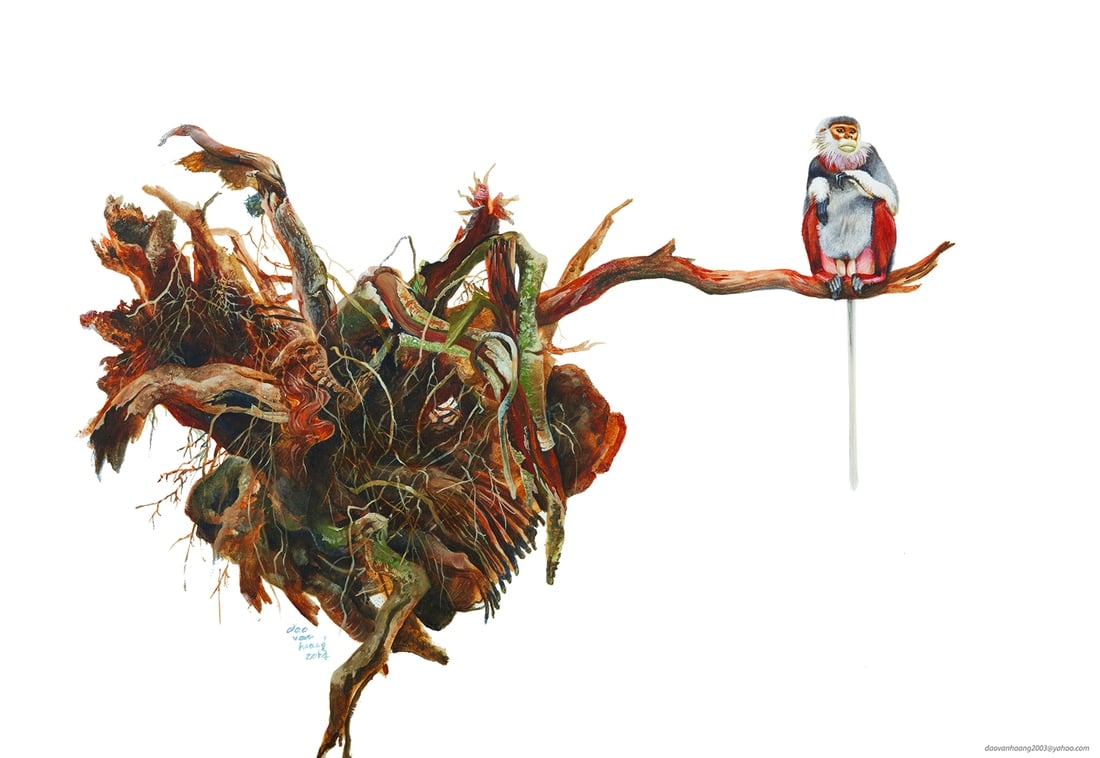
The painting "Uprooted" depicting a lonely red-shanked douc langur (Pygathrix nemaeus) on Son Tra Peninsula is the first work marking Dang Van Hoang's journey to becoming a wildlife artist. The painting was displayed in the exhibition "Primates of Vietnam" at the IPS conference, Hanoi 2014.
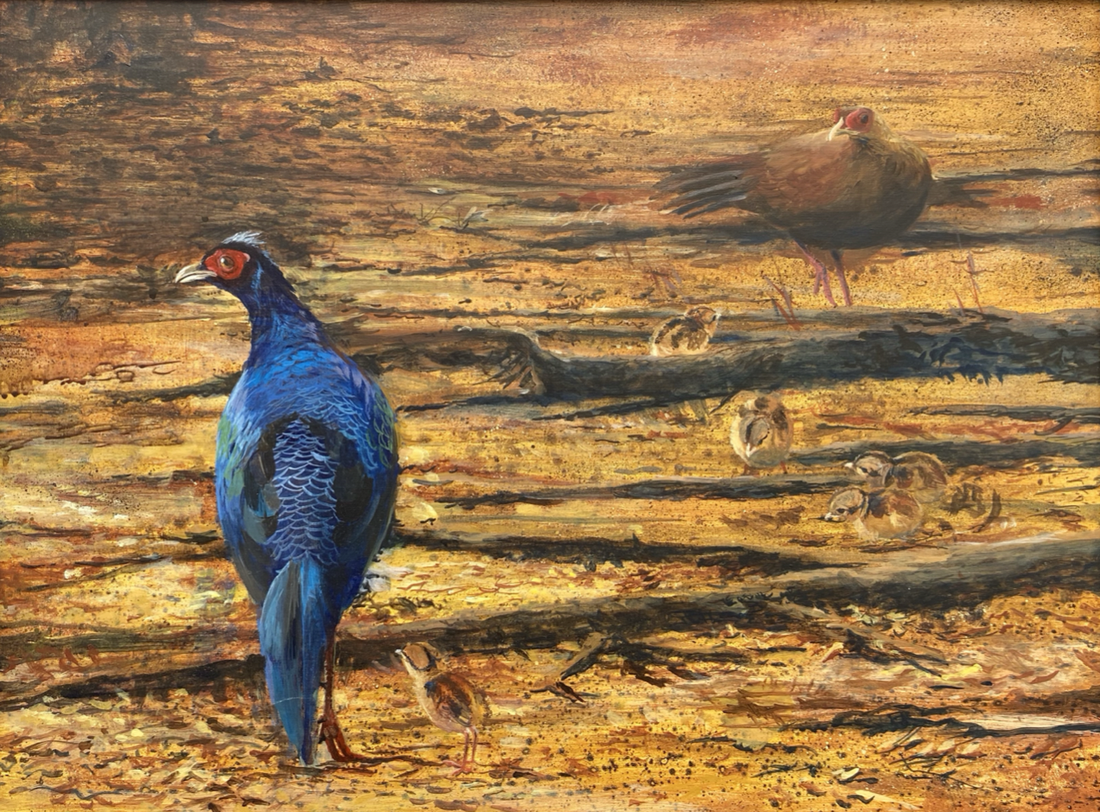
“Origin” depicts the Edwards’s Pheasant (Lophura edwardsi), a species that has been extinct in Vietnam’s forests for nearly 30 years and is now being brought back to its homeland by a conservation project. In the painting, the male bird stands upright, contrasting with the horizontal lines of tree roots symbolizing its origins.
For the first time appearing publicly in a solo exhibition, the French artist of Vietnamese origin expressed his excitement, and then "breathed a sigh of relief" when he received many positive responses.
He hopes that through the exhibition, people will see that wildlife conservation is not something far away or too difficult. Everyone can contribute in many ways, like him... painting!
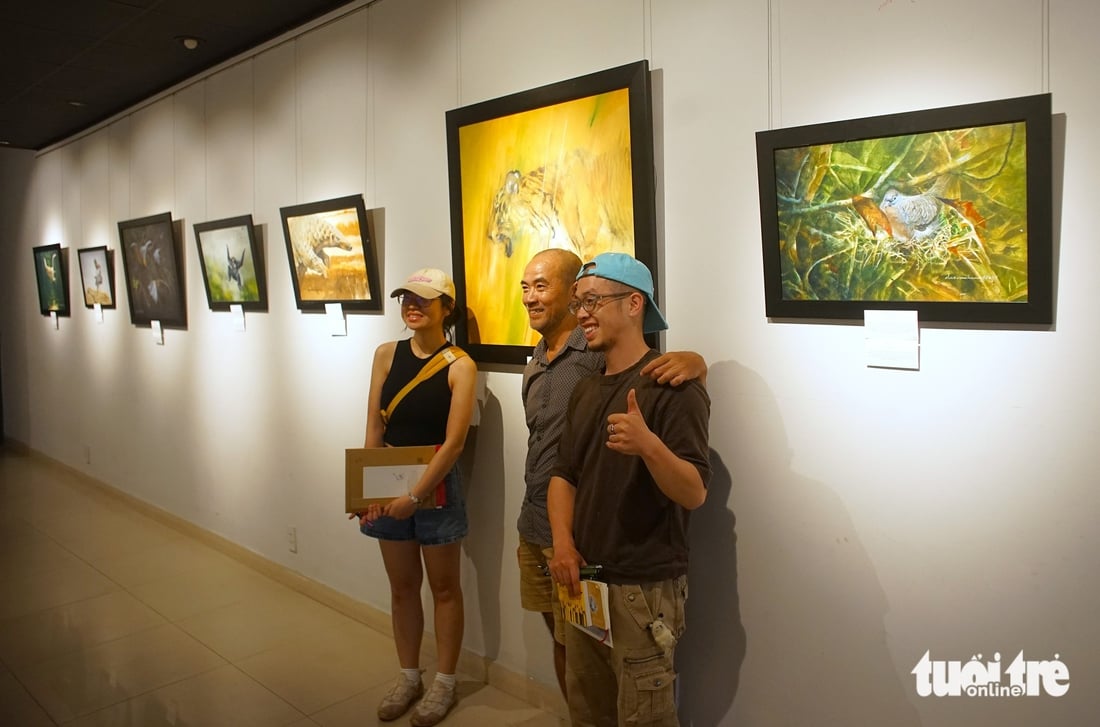
Two young people looked at the paintings for a long time and waited to get an autograph and take a photo with the artist - Photo: H.VY
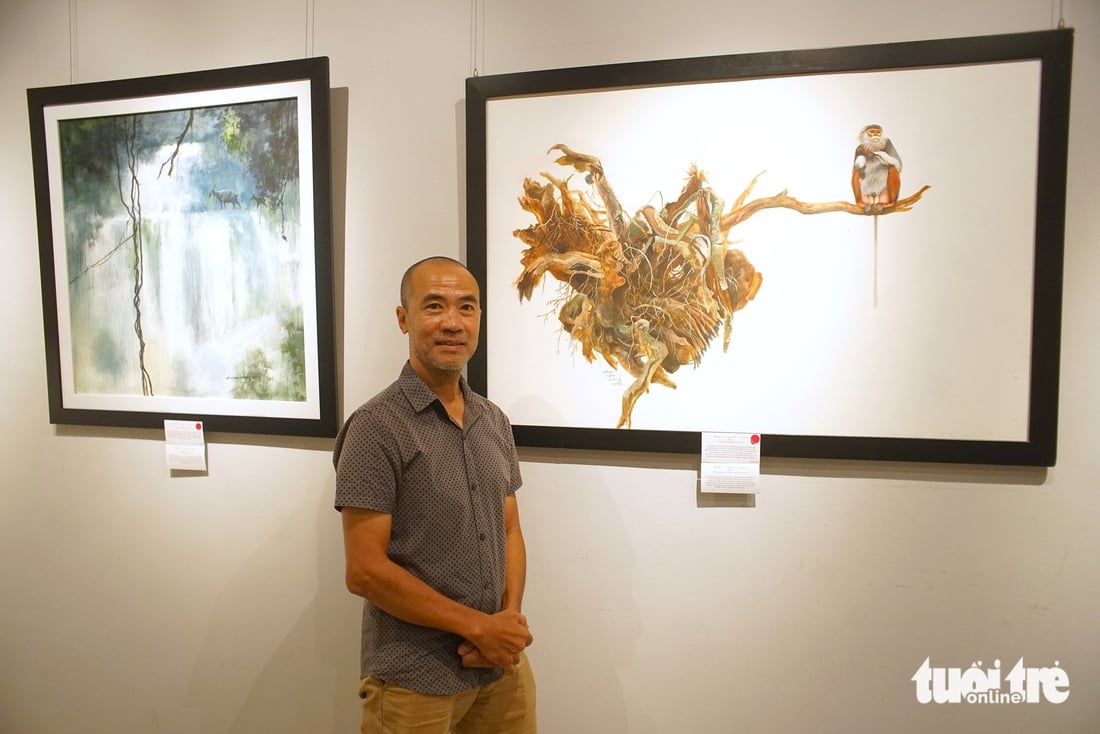
"Regarding the message, I simply share the images. But if someone sees, feels, and falls in love - who knows, they might also fall in love with the creature depicted in the painting. And when we love something, we want to preserve it." - Painter Dao Van Hoang shared.
Source: https://tuoitre.vn/choang-ngop-voi-bo-tranh-dong-vat-hoang-da-co-loai-da-tuyet-chung-cua-hoa-si-viet-nam-20250714235200576.htm



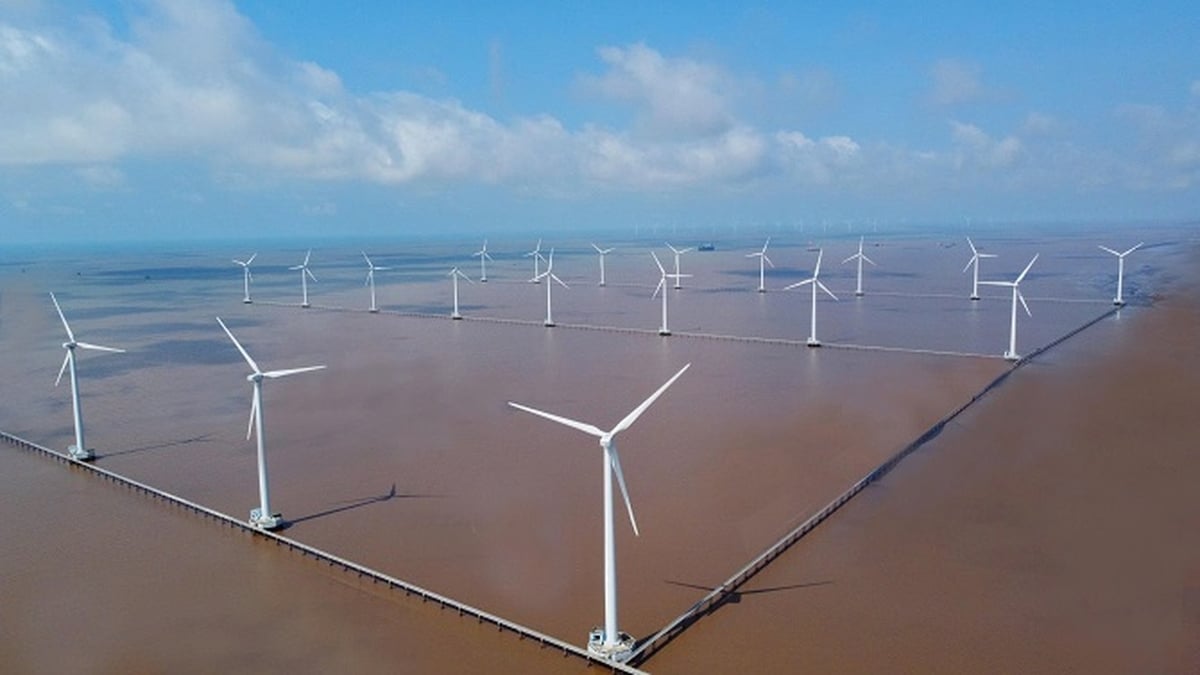

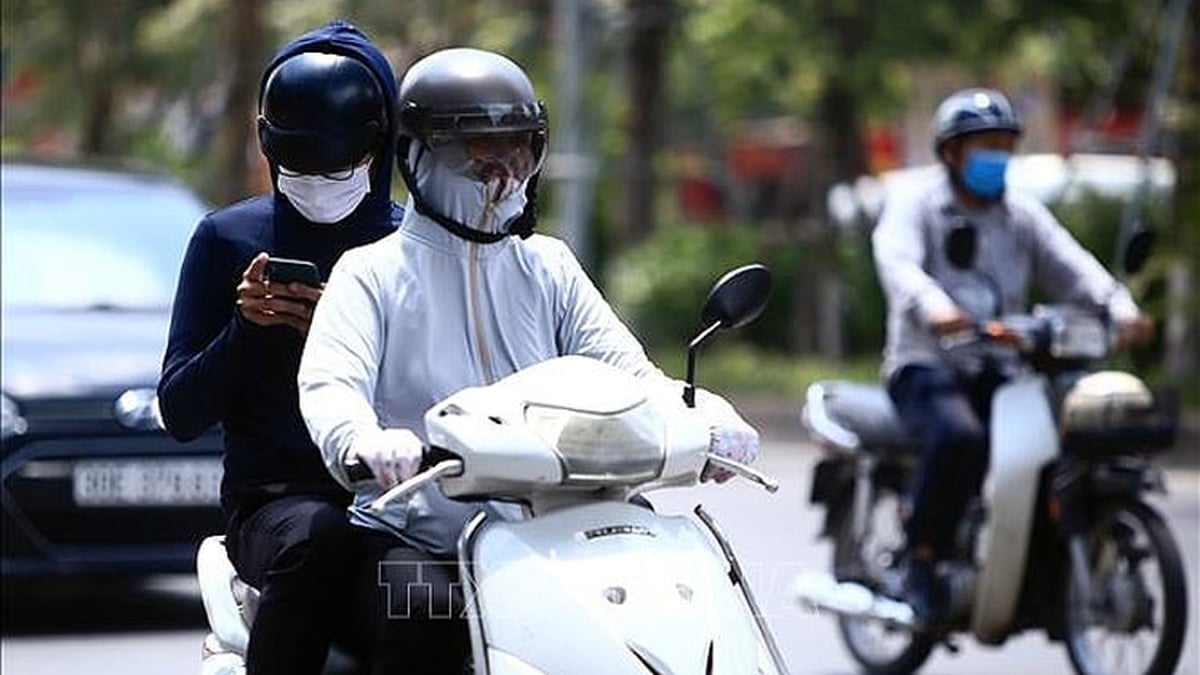
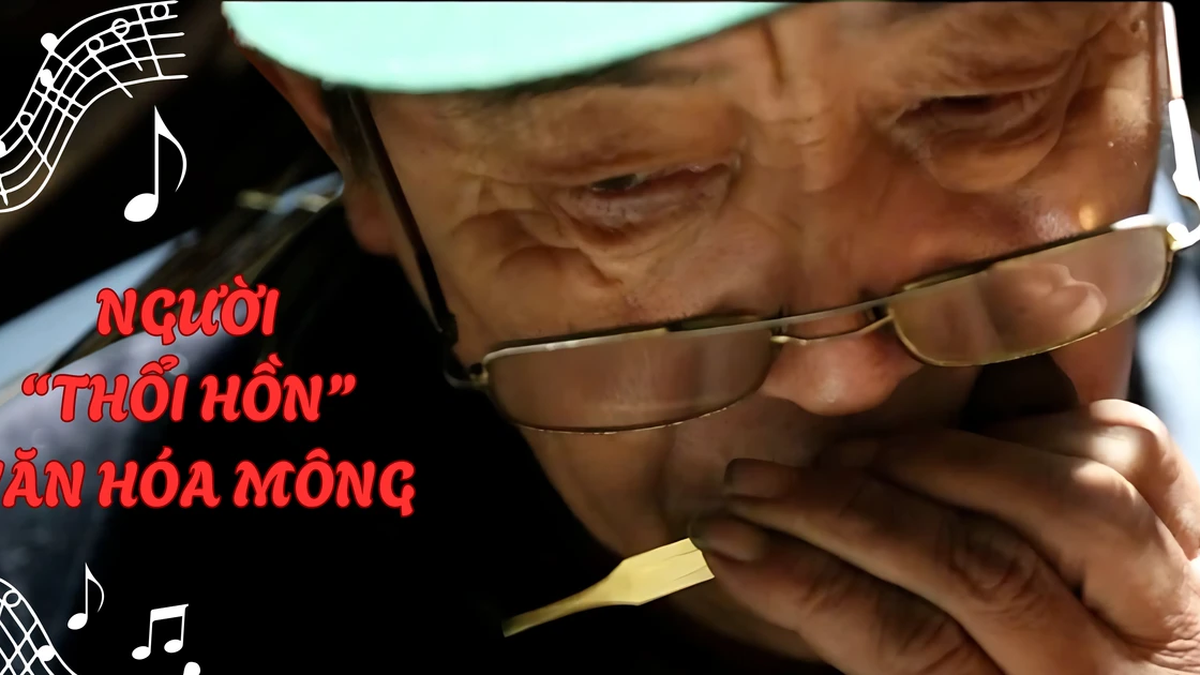
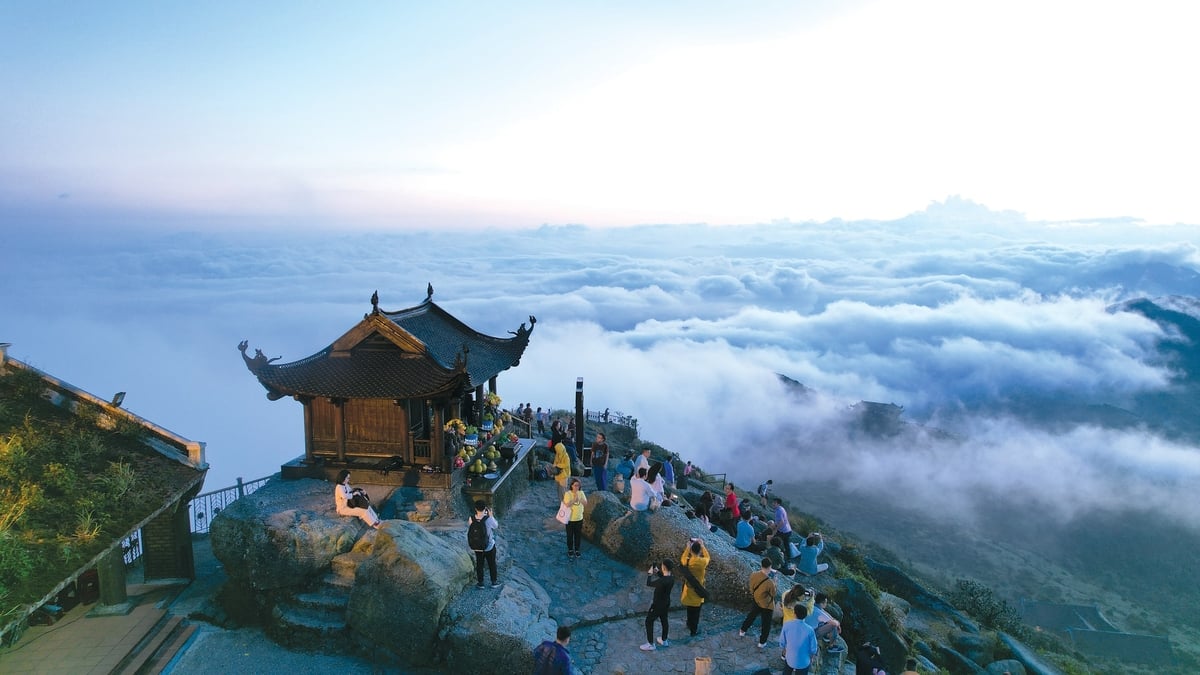
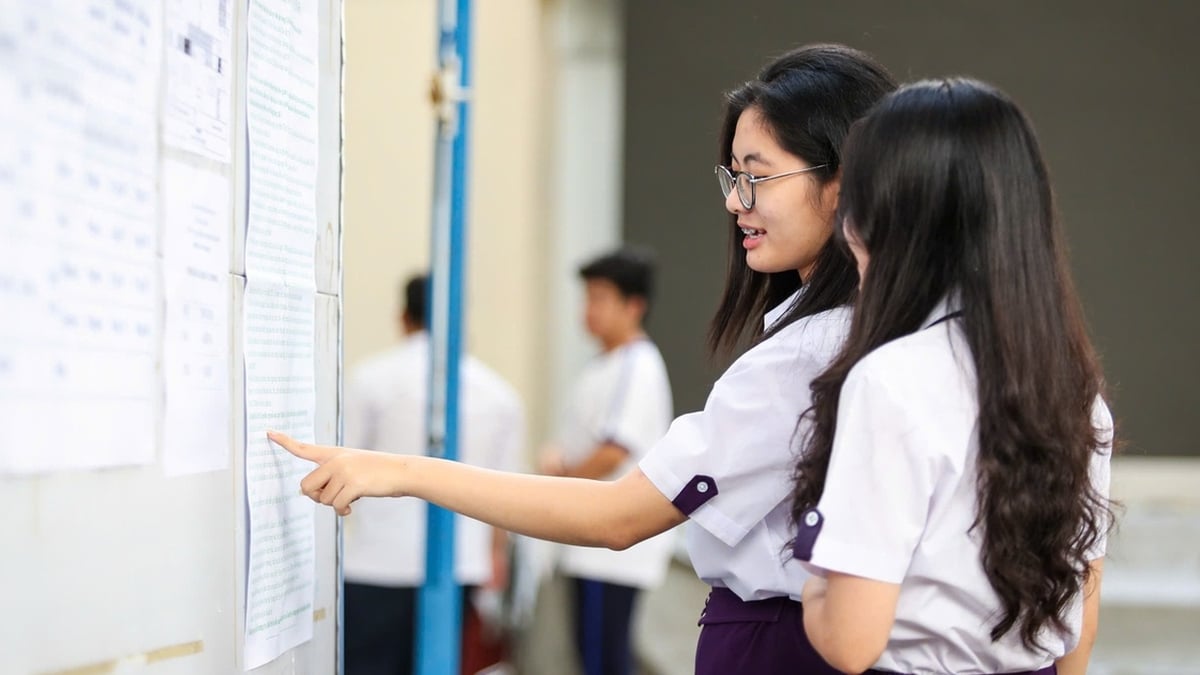
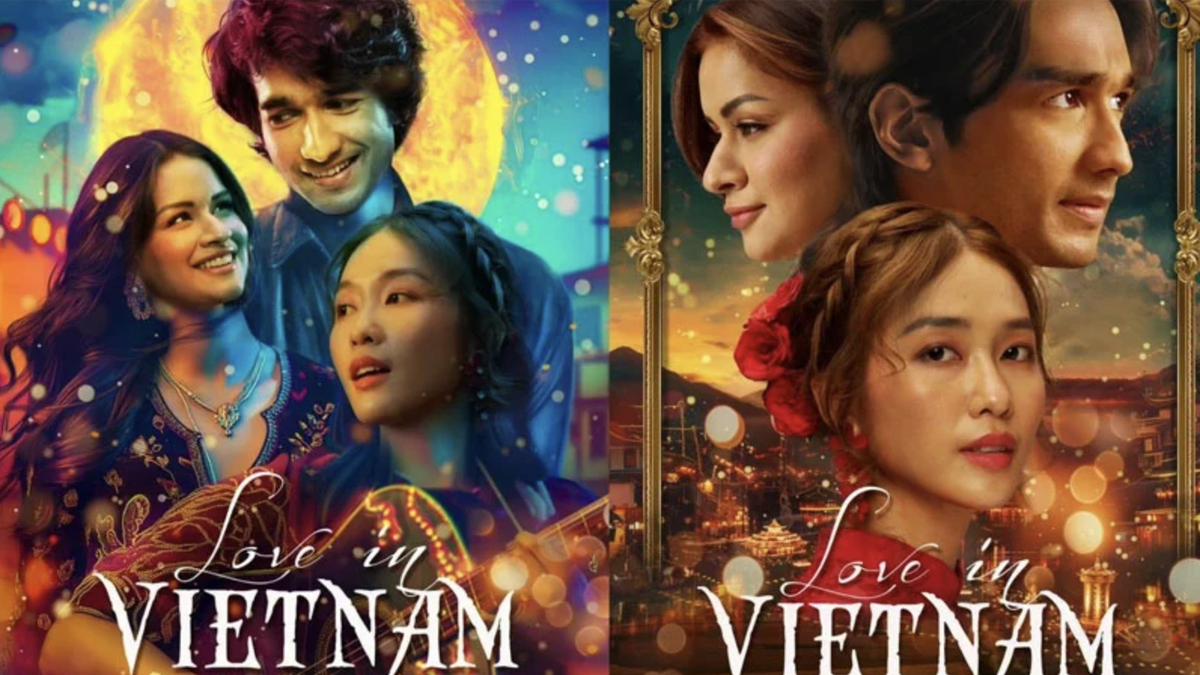
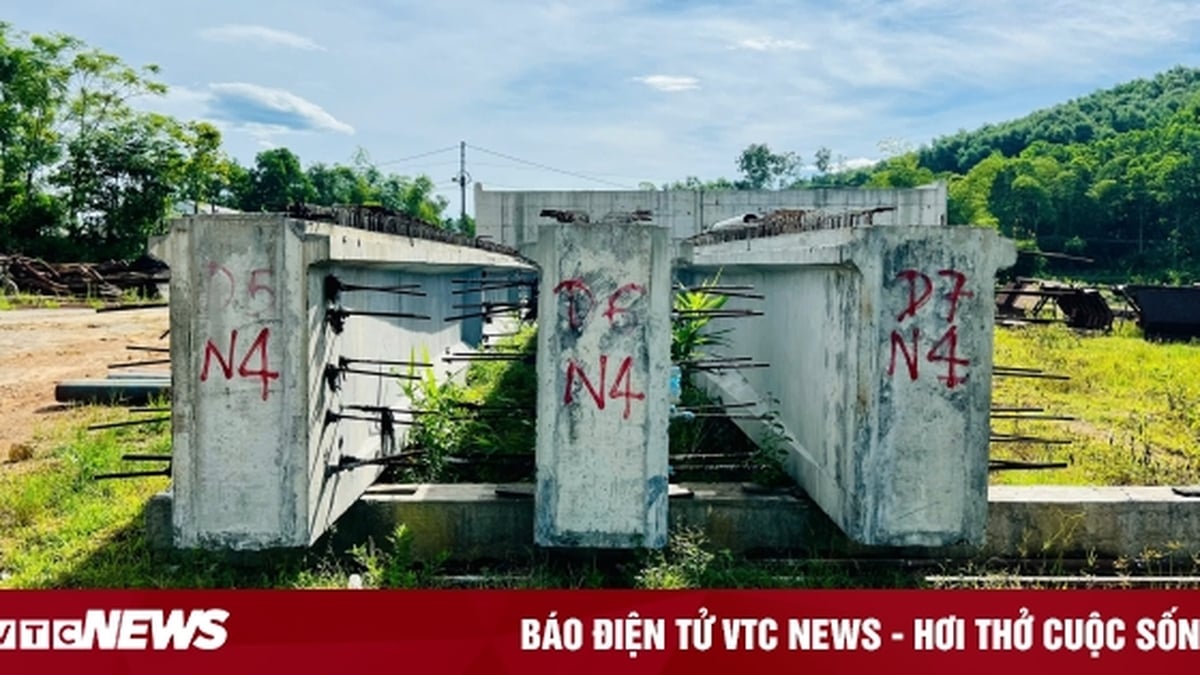
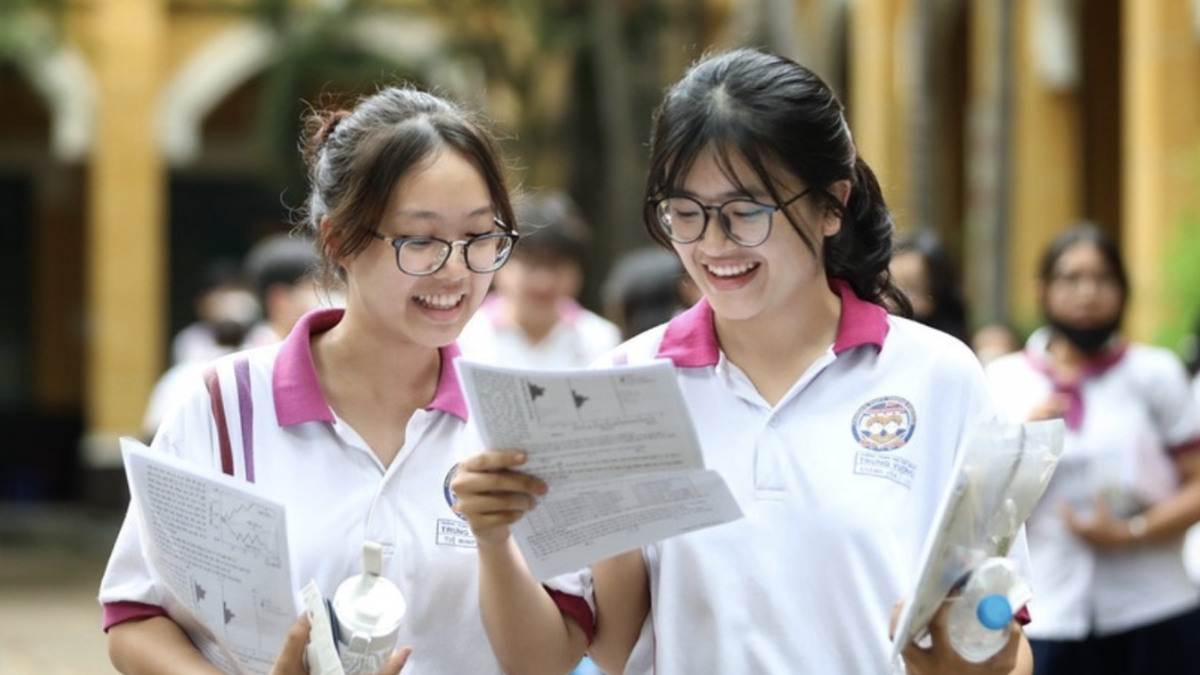














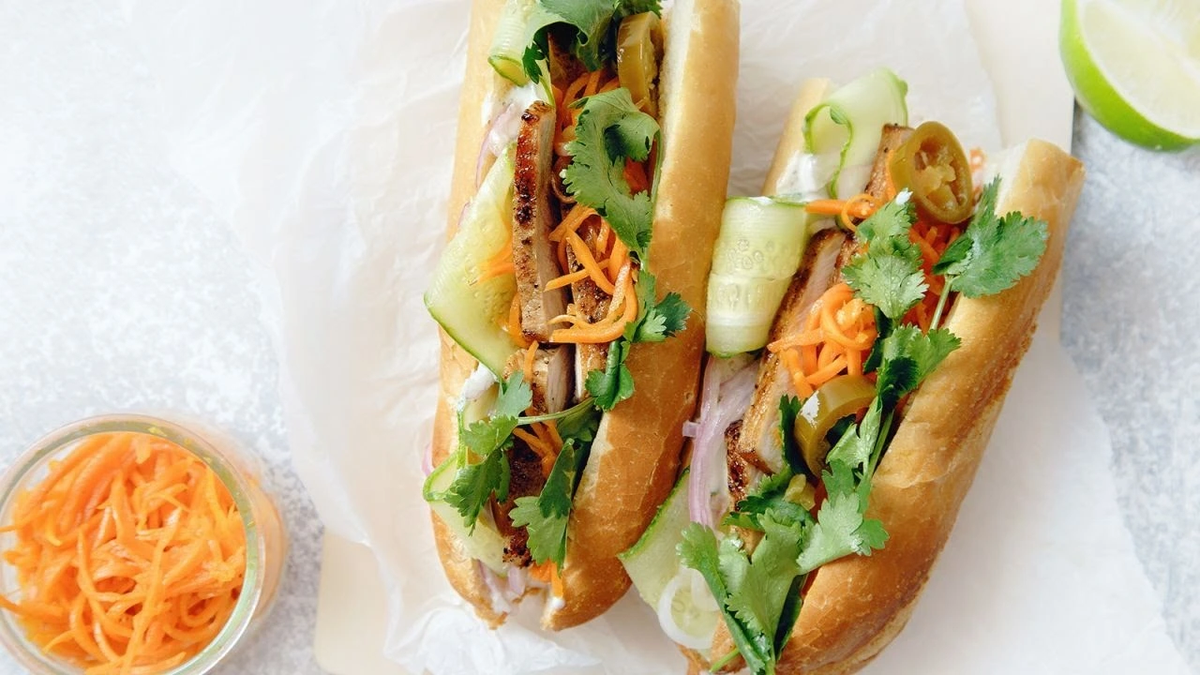









































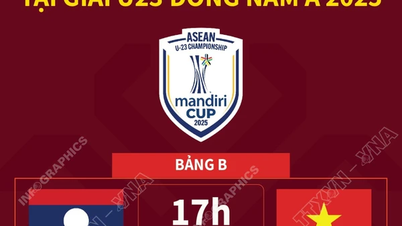






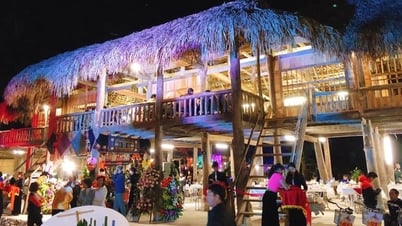

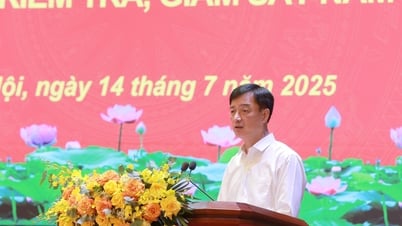
























Comment (0)